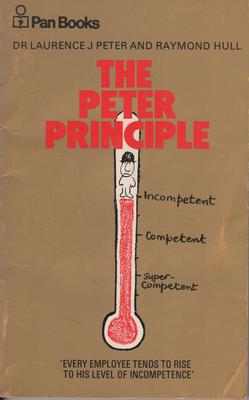
The Peter principle is a concept in management developed by Laurence J. Peter which observes that people in a hierarchy tend to rise to "a level of respective incompetence": employees are promoted based on their success in previous jobs until they reach a level at which they are no longer competent, as skills in one job do not necessarily translate to another.
Marketing myopia is the tendency of businesses to define their market so narrowly as to miss opportunities for growth. It is suggested that businesses will do better in the long-term if they concentrate on improving the utility of a product or good, rather than just trying to sell their products.
The halo effect is the tendency for positive impressions of a person, company, country, brand, or product in one area to positively influence one's opinion or feelings. Halo effect is ”the name given to the phenomenon whereby evaluators tend to be influenced by their previous judgments of performance or personality.” The halo effect is a cognitive bias which can prevent someone from accepting a person, a product or a brand based on the sum of all objective circumstances at hand.
Founder's syndrome is the difficulty faced by organizations, and in particular young companies such as start-ups, where one or more founders maintain disproportionate power and influence following the effective initial establishment of the organization, leading to a wide range of problems. The syndrome occurs in both non-profit and for-profit organizations or companies.
In Search of Excellence is a book written by Tom Peters and Robert H. Waterman Jr. First published in 1982, it sold three million copies in its first four years, and was the most widely held monograph in the United States from 1989 to 2006. The book explores the art and science of management used by several companies in the 1980s.
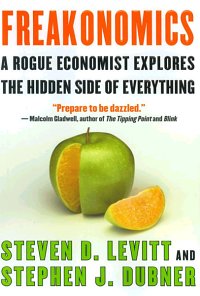
Freakonomics: A Rogue Economist Explores the Hidden Side of Everything is the debut non-fiction book by University of Chicago economist Steven Levitt and New York Times journalist Stephen J. Dubner. Published on April 12, 2005, by William Morrow, the book has been described as melding pop culture with economics. By late 2009, the book had sold over 4 million copies worldwide. Based on the success of the original book, Levitt and Dubner have grown the Freakonomics brand into a multi-media franchise, with a sequel book, a feature film, a regular radio segment on National Public Radio, and a weekly blog.
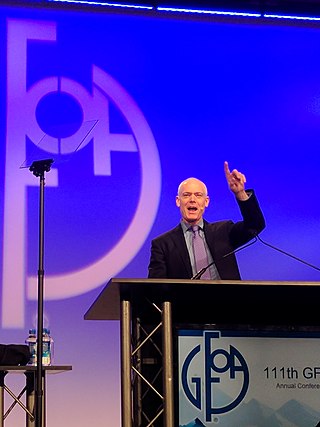
James C. Collins is an American researcher, author, speaker and consultant focused on the subject of business management and company sustainability and growth.

Concept of the Corporation (1946) is a book by management professor and sociologist Peter Drucker.

Built to Last: Successful Habits of Visionary Companies is a book written by Jim Collins and Jerry I. Porras.
A mission statement is a short statement of why an organization exists, what its overall goal is, the goal of its operations: what kind of product or service it provides, its primary customers or market, and its geographical region of operation. It may include a short statement of such fundamental matters as the organization's values or philosophies, a business's main competitive advantages, or a desired future state—the "vision". Historically it is associated with Christian religious groups; indeed, for many years, a missionary was assumed to be a person on a specifically religious mission. The word "mission" dates from 1598, originally of Jesuits sending members abroad.
The Ultimate Boeing 747 gambit is a counter-argument to modern versions of the argument from design for the existence of God. It was introduced by Richard Dawkins in chapter 4 of his 2006 book The God Delusion, "Why there almost certainly is no God".

Anna Benjamin David is an American publisher, author, speaker, podcast host, and television personality.

Darwin's Angel is a book published in response to Richard Dawkins' The God Delusion. It was written by John Cornwell and subtitled An Angelic Riposte to The God Delusion.
The getAbstract International Book Award is a bilingual award for nonfiction business-focused books.
Jeffrey Pfeffer is an American business theorist and the Thomas D. Dee II Professor of Organizational Behavior at the Graduate School of Business, Stanford University, and is considered one of today's most influential management thinkers.
The term New Atheism describes the positions of some atheist academics, writers, scientists, and philosophers of the 20th and 21st centuries. New Atheism advocates the view that superstition, religion, and irrationalism should not simply be tolerated. Instead, they advocate the antitheist view that the various forms of theism should be criticised, countered, examined, and challenged by rational argument, especially when they exert strong influence on the broader society, such as in government, education, and politics. Major figures of New Atheism include Richard Dawkins, Sam Harris, Christopher Hitchens and Daniel Dennett, collectively referred to as the "four horsemen" of the movement, as well as Ayaan Hirsi Ali until her conversion to Christianity in 2023.
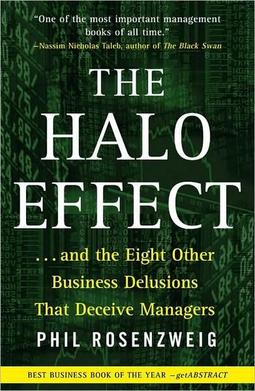
The Halo Effect is a book by business academic Phil Rosenzweig that criticizes pseudoscientific tendencies in the explanation of business performance. The book was published by Free Press on February 6, 2007. As well as many business magazines and newspapers, the text targets specific books and academic research published by business schools. It outlines nine "delusions": mistakes of reasoning that undermine these recipes for business success. In light of these mistakes, Rosenzweig argues, much of business writing is what Richard Feynman called "cargo cult science", having the superficial trappings of science but operating at the level of story-telling. The book also considers some more scientific business research, whose conclusions are more rigorous but do not promise a simple recipe for success. The subtitle of the 2007 US edition is "and the Eight Other Business Delusions that Deceive Managers" while that of the 2008 UK edition is "How Managers Let Themselves Be Deceived".
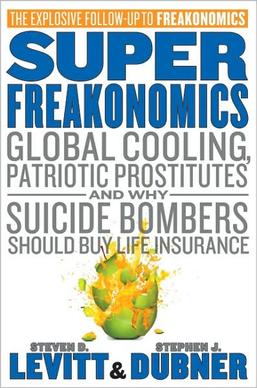
SuperFreakonomics: Global Cooling, Patriotic Prostitutes, and Why Suicide Bombers Should Buy Life Insurance is the second non-fiction book by University of Chicago economist Steven Levitt and The New York Times journalist Stephen J. Dubner, released in early October 2009 in Europe and on October 20, 2009 in the United States. It is a sequel to Freakonomics: A Rogue Economist Explores the Hidden Side of Everything.

Nash Format Publishers is a Ukrainian publishing company based in Kyiv. It focused on non-fiction literature and has a fiction series. The publisher has offered to the Ukrainian readers 300 translations of books, including works by Nobel Prize laureates, The New York Times and The Economist bestsellers. Nash Format publishes both printed books, ebooks and records audiobooks.

Management System (Open Source) is a socio-technical system that leverages the cumulative knowledge of management practitioners and evidenced based research from the past 130 years. The system was developed by DoD components in partnership with industry experts and academic researchers and builds off of the US Department of Wars version 1.0 open source management system - Training Within Industry.











